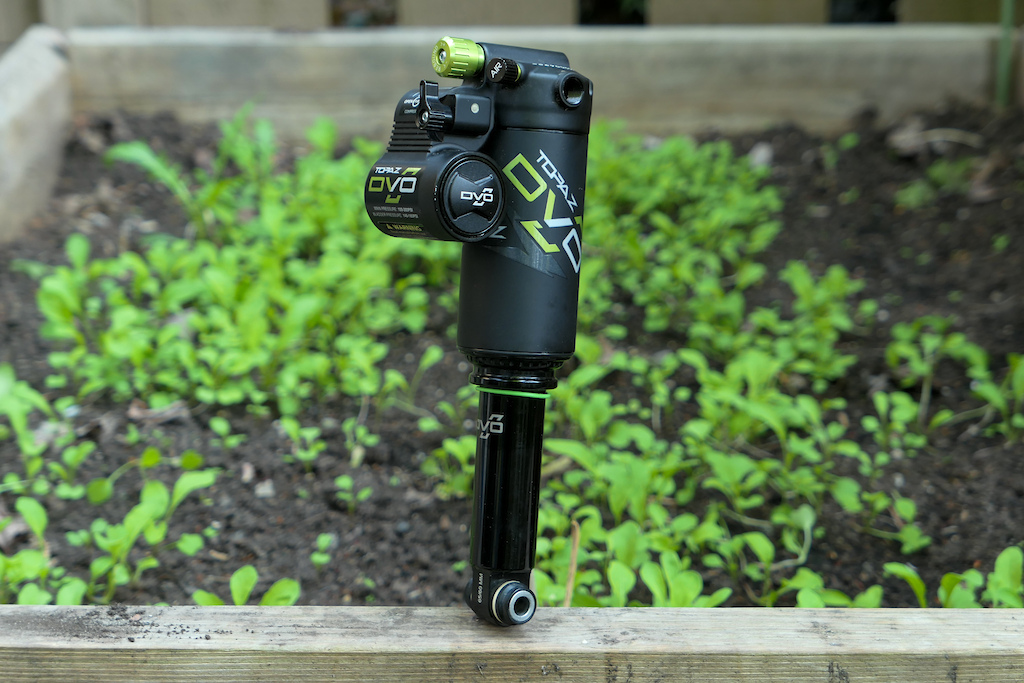
One of DVO’s specialties is shock tuning, and for $150 USD their techs will custom build a shock specifically for you and your frame. After answering a series of six questions, any of their shocks (and forks) can be hand built to your needs and the bike’s specific linkage design.
• Adjustable bladder pressure
• 3-position low-speed compression switch
• Dynamic rebound
• Positive and negative air volume tuning options
• Sizes: 190 x 40 – 230 x 65mm metric and 165 x 40 – 205 x 65mm trunnion
• Weight: 492g (205x60mm)
• MSRP: $550
• dvosuspension.com
The Topaz 3 costs $550 USD and is available in nearly every size under the sun from 190 x 40mm to 230 x 65mm metric sizes and 165 x 40 to 205 x 65mm trunnion mount options. DVO also revised the shape of the damper housing to fit into more frames as well.

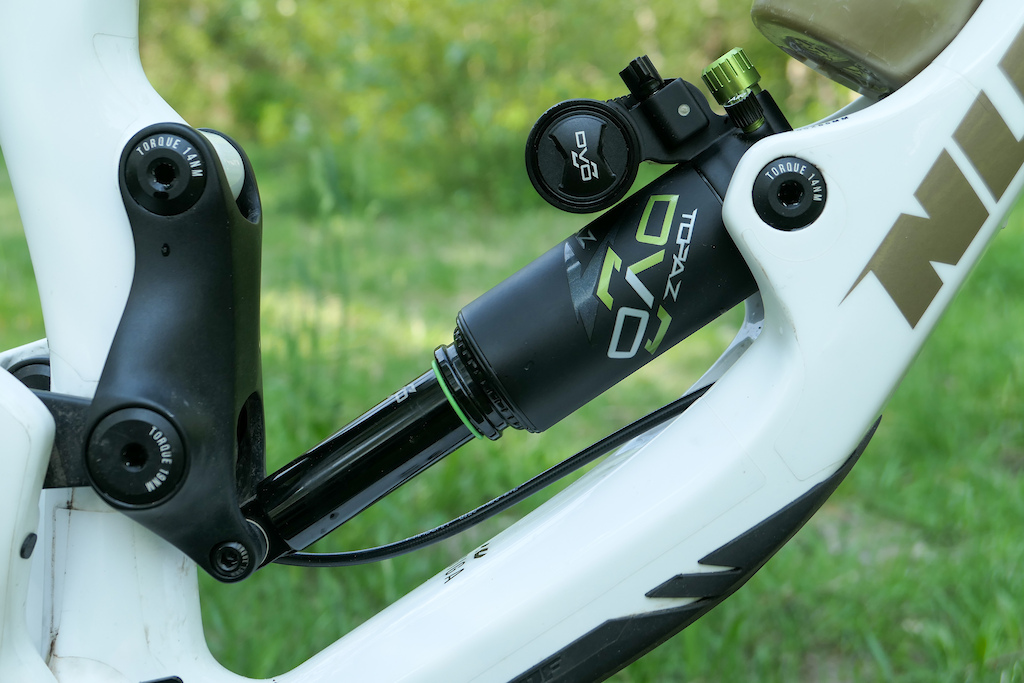

Adjustments
At first glance, the Topaz 3 doesn’t have the usual clickers you’d find on more common shocks, but DVO has incorporated a few clever ways to let the rider tune both the damping and air spring to their liking.
Externally, there is just a single rebound knob and a 3-way low-speed compression adjuster. The rebound knob has 9 clicks in the range, each making a noticeable change, and the low-speed adjuster is more of a climb switch.
For those riders hoping for tool-free low-speed compression adjustment, the shock can be retrofitted with an external dial for between $200 and $250 USD. DVO has a step-by-step procedure for home mechanics and shops to tackle this, but special tools are required.
Another option is to experiment with bladder pressure. This can be tuned between 140-180 psi by connecting the provided shock pump to the Schrader valve under the tool-free cap on the side of the housing. The process is as simple as changing the spring rate.
How does it work in comparison to an IFP? The theory is the same, but the components are slightly different. Instead of an air-sprung piston, the pressurized bladder is compressed as the damper cycles fluid into the chamber. DVO prefers the bladder design for its lower friction characteristic since it doesn’t use an O-ring to separate the oil and air, ultimately leading to smoother direction changes between compressing and rebounding. Adding more pressure to the bladder will resist the oil flow and therefore lead to a firmer feeling shock.
The air spring pressure ranges between 100-300 psi with the possibility to tune both the positive and negative chambers by adding or subtracting small plastic spacers. On the positive side, adding more volume spacers will make the air spring more progressive and resist bottoming out. When adding spacers to the negative air chamber, the shock will become firmer at the beginning of the stroke.
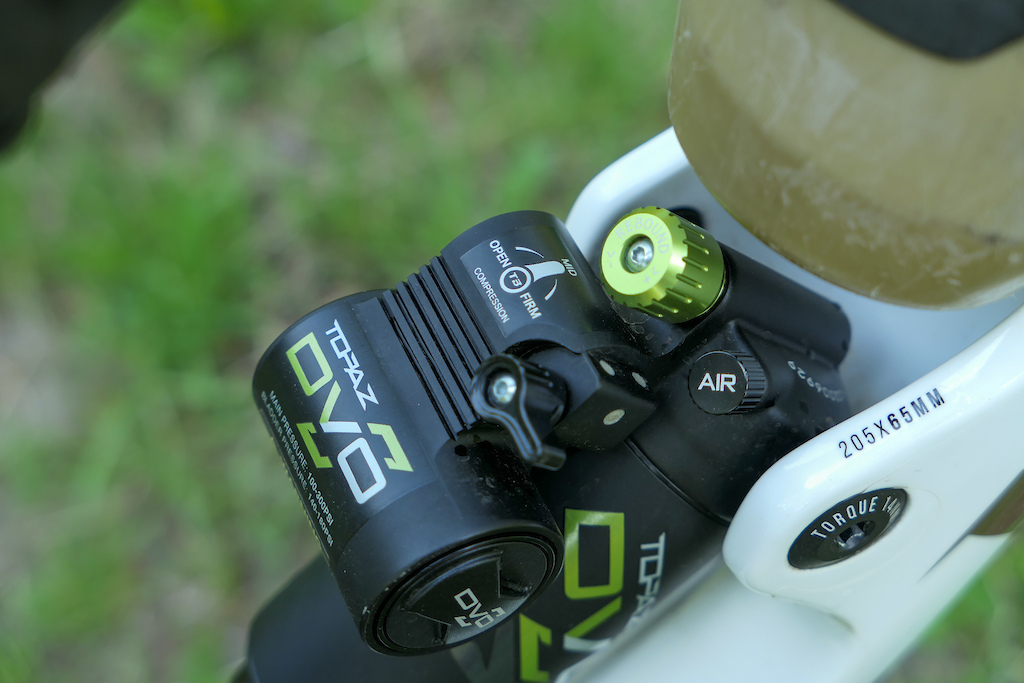
Performance
DVO sent out this Topaz which was tuned for the Trek Fuel EX-e with a linear-progressive leverage rate across a 205 x 60mm stroke shock. Installing and setting up the shock was straightforward with little to worry about, other than the amount of sag the air spring provided and adjusting the rebound dial to my liking.
For the majority of the time, I let the shock sag to 28% with no spacers in the negative air chamber and two in the positive side, just as the shock arrived. This gave me enough support off the top of the travel and plenty of bottom-out resistance too.
The rebound dial sat near the middle, either four or five clicks out, depending on the ambient temperature. As expected, the 3-position low-speed lever stayed in the open position when descending but on occasion, I’d turn that to the “mid” position for smooth climb trails where I wanted the suspension to help the rear tire stay on the ground over lumpy gravel climbs. The fully locked out position is best left for road commutes since it’s ultra firm.
One feature that I noted quickly on the Topaz was the LSC switch’s ability to flip from closed to open with the lightest touch. Oddly enough, that disappeared as time went on and it required a helping hand to push it into the fully open setting for descending.
Playing with bladder pressure is an interesting way to see how dramatically the firmness of the shock changes. Starting at 140 psi and moving up in 10 increments makes a noticeable change. The best way to explain those jumps in bladder pressure is like adding a “racey” feel in terms of support and control every 10 psi bump up. I wouldn’t say it becomes overbearing once you reach 160 psi, but as a mid-weight rider, I preferred the lower half of the range.
I’ll give it up to DVO and their bladder system because this is one silky shock. There’s nothing worse than feeling a mechanical knock as the damper changes direction. This sensation never deteriorated, even at high bladder pressures.
Since the Trek Fuel EX-e’s suspension felt firm enough at the beginning of the travel, and ramped well towards the end, I never felt the need to alter with the volume spacers but did so to experiment and explore the inner workings of the shock.
There are no special tools required to remove the air can or rearrange the volume spacers. Unthreading the air can by hand was straightforward, however, it did take a steady hand to carefully lift the O-ring out of its seat, slide it off, and expose the air two chambers.
After adding a negative spacer, I felt the need to reduce the bladder pressure to the lower 140 psi limit for the Fuel EX-e. This made the small bump performance less desirable and I reverted back to the stock arrangement after a few outings.

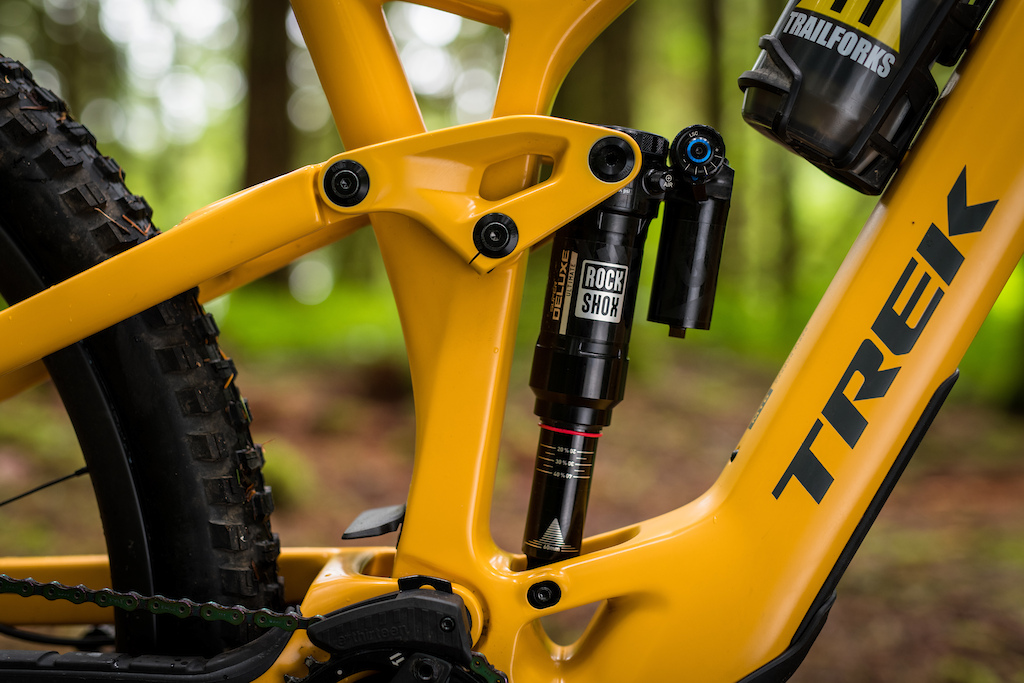
How Does It Compare?
We gave the RockShox Super Deluxe the 2022 Suspension Product of the Year award, which is a hard-fought battle, so how does the DVO Topaz 3 stack up?
Price and Weight
For starters, the Topaz 3 is slightly cheaper, foregoing the low-speed adjuster upgrade and custom tune. At $550 USD, the Topaz is $50 less than the Super Deluxe, although independent high and low-speed adjusters are stock equipment on the RockShox unit. In terms of weight, the two shocks are nearly identical and hover near the 490g mark.
Service and Warranty
Both shocks come with a 2-year warranty but their service intervals are drastically different. RockShox calls for air can servicing every 50 hours for the maximum performance, and a full damper rebuild every 200 hours, whereas DVO states that the only mechanical service required is after 150 hours, or once a year. We never experienced any premature durability concerns with the Topaz 3.
On the trail, there’s no faulting the suppleness of either one of these shocks – they both break into the travel brilliantly and change direction between compressing and rebounding without a worry.
Adjustments
The Super Deluxe has independent high and low-speed compression that can be changed with just an Allen key, whereas the Topaz requires a shock pump to alter the bladder pressure or an aftermarket upgrade to the external low-speed compression dial.
On the other hand, the Topaz features a three position climb switch. I didn’t find myself using the middle position much, but for other bikes that could be a bonus setting, whereas the Super Deluxe climb switch is either totally on or off. That lever is also low profile and stiffer on the Super Deluxe, so twisting it on the fly takes strong fingers.
Air Spring Tuning
Bottom out control was handled marginally better by the Super Deluxe, which ramped earlier and less abruptly. Adding a third volume spacer to the Topaz didn’t help that cause and the stock setup still worked a treat to avoid worrisome mechanical bottom outs. Both shocks have the ability to modify the negative air spring as well, although their stock arrangement performed best.
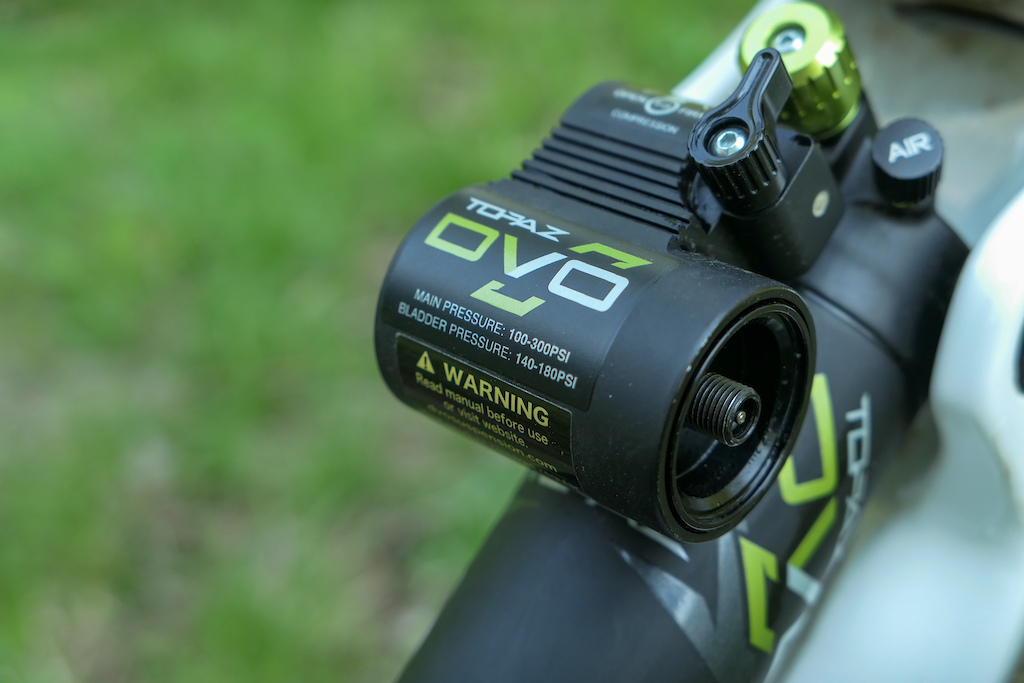
+ Ultra-smooth action at the top of the travel and changes in shaft directions
+ Easily adjustable positive and negative air springs.
– The low-speed compression adjuster is more of a climb switch – the middle setting is overly firm for descending
– There are other shocks on the market with equal performance that include additional external adjustments at a lower cost
Pinkbike’s Take

